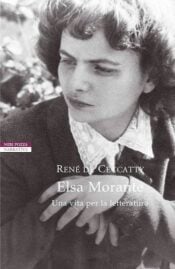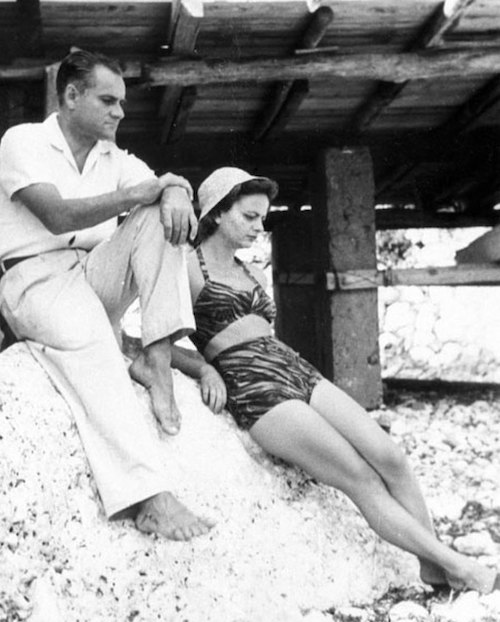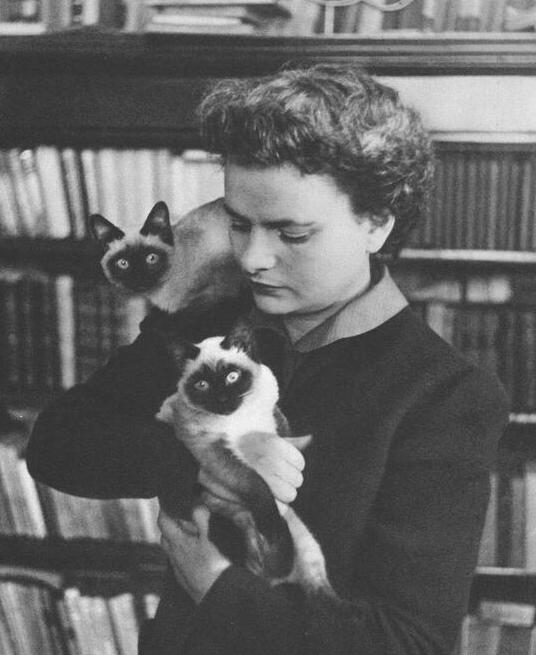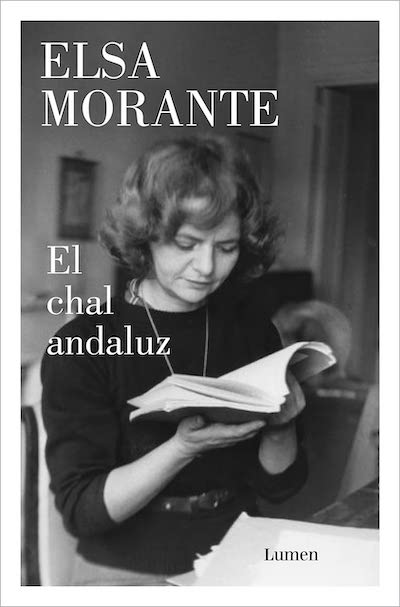Elsa Morante, author of Arturo’s Island
By Katharine Armbrester | On July 24, 2023 | Comments (0)

Before the advent of the mysterious, best-selling author Elena Ferrante there was the provocative Italian novelist and short story writer Elsa Morante (August 18, 1912 – November 25, 1985).
Morante portrayed life’s pain and perils, but her novels also detail the power of imagination that can transport us from cruel reality. Her four novels span the entire twentieth century and illuminate the lives and inner worlds of men, women, and children.
All of her novels detail the main character’s coming of age and their fear of leaving behind the safety of childhood for the potential dangers of adulthood, and the prospect of death. Morante acknowledged the dark, overarching theme of her novels:
“The transition from fantasy to consciousness (from youth to maturity) is a tragic and fundamental experience for everyone. For me that experience came early and took the form of war: my encounter with maturity was premature and hit me with devastating force.”
Early Life
Morante began and ended her life in the culturally and historically rich city of Rome, Italy. Born in obscurity, she would leave an indelible mark on the capital city’s literary heritage. Her early life was unhappy; her parents’ marriage was deeply troubled and she later found out that her biological father was a family friend.
By the age of five, Morante was writing poems and soon began creating plays and children’s stories that were extraordinarily inventive. She was supported in her early literary efforts by her wealthy godmother and a headmistress that proclaimed her “a genius.”
At the age of eighteen, she left her traumatic home environment, determined to support herself as a writer. Growing up in poverty in pre-war Rome, Morante never attended university. Instead, she continued to educate herself for the rest of her life and later befriended Rome’s leading intellectuals.
Her eventual personal and professional triumphs are even more remarkable since, like the esteemed Maya Angelou, Morante frequently supported herself as a sex worker to survive.
. . . . . . . . . .

Alberto Moravia and Elsa in the 1940s
Photo courtesy of Wikimedia Commons
. . . . . . . . . .
Marriage to Alberto Moravia
In 1957, at the age of twenty-five, Morante met fellow writer Alberto Moravia, who was ten years her senior. Struggling with ill health, he was slowly building a literary reputation.
He described Morante, his future wife, as “an angel fallen from heaven into the practical hell of daily living. But an angel armed with a pen.” He also described her as a person who “lived in the exceptional and not in the normal.” They married in 1941 and remained married for twenty-one years.
Lily Tuck, Morante’s biographer, described the couple’s love as “often expressed in an ambivalent, disingenuous, and belligerent fashion.” Although the fraught union eventually ended in divorce, the pair are still celebrated as Italy’s most famous literary couple.
Both Morante and Moravia were half-Jewish and were forced into hiding during World War II. Their harrowing experiences inspired works by each of them: Moravia’s Two Women (the basis of the Oscar-winning film starring Sophia Loren), and History (La Storia) which is being adapted into an eight-part miniseries.
. . . . . . . . . .

Elsa and her beloved cats
Photo courtesy of Wikimedia Commons
. . . . . . . . . .
Personality and writing habits
A known lover of cats, she was noted for her piercing, cat-like gaze, along with her style and singular beauty. Her personality was as unusual and compelling as her writing. She was emotionally volatile and could dazzle and repel those who were drawn to her in equal measure. Her biographer Lily Tuck notes that Morante possessed “a sharp and sensitive mind.”
Tuck makes special notes of her unique writing habits:
“Morante always wrote in longhand in large, black, unlined notebooks … she wrote on every other page, leaving the intervening pages blank for note and corrections … She used different colored pens and she often doodled or drew pictures of cats and stars on the side of the page.”
All her life, Morante drew eccentric people to her and was known for her loyalty and generosity. She was close friends with the controversial filmmaker and polymath Pier Paolo Pasolini and was broken-hearted by his murder, which has yet to be solved.
Perhaps influenced by her circle of friends and unconventional upbringing, she populated her novels with unconventional characters and societal outcasts. Each of her novels is highly original and utterly lacking in sentimentality.
. . . . . . . . . .

. . . . . . . . . .
Major works
Morante’s first novel was House of Liars (1948) which has been recently reprinted by the New York Review of Books and retitled Lies and Sorcery. A sprawling, multi-generational saga inspired by Leo Tolstoy and Marcel Proust, the plot is resolutely women-centric.
History (1974), despite its massive length and unusual structure, was one of the top international bestsellers of the 1970s, regarded as an extraordinary depiction of World War II. The plot of her final novel, Aracoeli (1982), is unusual in its psychological exploration of a son and his disturbed elderly mother.
Arturo’s Island (L’isolo di Arturo) is arguably Morante’s most popular novel, exquisitely translated most recently by Ann Goldstein, known for her translations of Elena Ferrante’s novels.
When first published in 1957, the novel ran counter to the contemporary literary trend of bleak neo-realism, but the tenderly-wrought, sun-drenched coming-of-age story immediately won over critics and audiences alike.
That year Morante won Italy’s most coveted literary award, the Strega Prize. Other famous winners include Giuseppe Tomasi di Lampedusa‘s The Leopard and Umberto Eco‘s The Name of the Rose. Arturo’s Island was adapted as a film in 1962.
Later life and death
After a slow and painful decline due to hydroencephalitis, Morante passed away on November 25, 1985 at the age of seventy-three. A newspaper headline announcing her death read “GOOD-BYE ELSA OF A THOUSAND SPELLS.”
Her friend Cesare Garboli declared that “There does not exist in all of Italian literature a writer who is more loved and hated, more read and more ignored, than Morante.” Over time, her reputation has steadily grown while Moravia’s has declined.
Morante acknowledged that she was a deeply wounded, complicated, and unpredictable woman, and in her writing she set out to create a form of femininity that resisted conventional standards. Her female characters are anguished, passionate, and determined to survive and thrive in a man’s world. All her life Morante defied the strictures of Fascism and the crushing patriarchy of her time.
Morante’s novels and short stories have much to offer the reader, particularly for their originality and mythical quality. Tuck writes: “She was a passionate, deeply spiritual person who despised authority under any form … She was a serious artist who wanted, through her work, to change the world, even as she knew quite well that it was impossible.”
. . . . . . . . . .

. . . . . . . . . .
Contributed by Katharine Armbrester, who graduated from the MFA creative writing program at the Mississippi University for Women in 2022. She is a devotee of Flannery O’Connor and Margaret Atwood, and she loves periodicals, history, and writing.
More about Elsa Morante
Further reading and sources
- Woman of Rome: A Life of Elsa Morante by Lily Tuck
- The Lives of the Wives: Five Literary Marriages by Carmela Ciuaru
- Literary Landscapes, edited by John Sutherland
- Jewish Women’s Archive
Novels
- Diario 1938 (1938)
- Menzogna e sortilegio (1948) – House of Liars, translated by Adrienne Foulke, 1951;
and as Lies and Sorcery, translated by Jenny McPhee, 2023 - L’isola di Arturo (1957) – Arturo’s Island, translated by Isabel Quigly, 1959;
translated by Ann Goldstein, 2019 - La storia (1974) – History: A Novel, translated by William Weaver, 1977
- Aracoeli (1982) – Aracoeli, translated by William Weaver, 1984
Short story collections
- Il gioco segreto (1941)
- Le straordinarie avventure di Caterì dalla Trecciolina (1942)
- Lo scialle andaluso (1963)
- Racconti dimenticati (1937–1947)
- Aneddoti infantili (1939–1940)
Leave a Reply